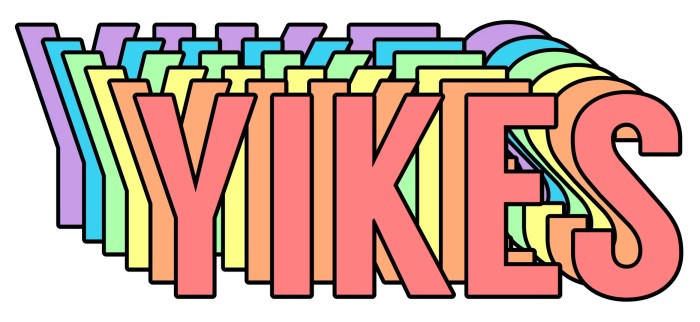Exclamation before an ill-advised action maybe! This captivating phrase introduces a discussion on the significance of using exclamation marks before ill-advised actions. Exclamation marks convey a range of emotions, from urgency and excitement to recklessness. Delving into this topic, we explore the impact of exclamation marks on the reader’s perception and examine alternative ways to convey urgency or excitement.
Throughout history, exclamation marks have played a crucial role in written communication, adding emphasis and emotion to words and phrases. In certain contexts, an exclamation mark placed before an ill-advised action can serve as a warning or an indication of the potential consequences.
Background of the Exclamation Mark

The exclamation mark, denoted as “!”, has a rich history and diverse usage across languages. It emerged as a punctuation mark during the Middle Ages, originally employed as a Latin abbreviation for “io,” an interjection expressing joy or surprise. Over time, its usage evolved to indicate a wide range of emotions, including excitement, urgency, and even recklessness.
In modern English, the exclamation mark is primarily used to emphasize strong emotions or convey a sense of urgency. It is commonly employed at the end of sentences to denote excitement, surprise, or astonishment. Additionally, it is used in interjections, exclamations, and commands to convey a specific tone or intention.
Exclamation Mark Before Ill-Advised Actions
The use of an exclamation mark before an ill-advised action can convey a sense of urgency, excitement, or even recklessness. It suggests that the action is being taken without proper consideration or caution. By adding an exclamation mark, the speaker or writer emphasizes the immediacy or impulsivity of the action, often implying that it is not well-thought-out.
In some cases, the exclamation mark can serve as a warning or cautionary note, alerting the reader to the potential risks or consequences associated with the action. However, it can also be used to express a sense of excitement or enthusiasm, suggesting that the speaker or writer is eager to proceed despite the potential risks.
Examples of Ill-Advised Actions Preceded by Exclamations: Exclamation Before An Ill-advised Action Maybe

| Action | Exclamation | Potential Consequences |
|---|---|---|
| Jumping off a cliff without a parachute! | ! | Serious injury or death |
| Investing all your savings in a risky venture! | ! | Financial ruin |
| Driving under the influence of alcohol! | ! | Accidents, legal consequences |
Impact of the Exclamation Mark on the Reader’s Perception
The exclamation mark has a significant impact on the reader’s perception of an ill-advised action. It draws attention to the action and emphasizes its urgency or importance. By using an exclamation mark, the speaker or writer creates a sense of immediacy, suggesting that the action should be taken without delay.
Additionally, the exclamation mark can influence the reader’s emotional response to the action. It can evoke feelings of excitement, surprise, or even fear, depending on the context. By using an exclamation mark, the speaker or writer can convey a specific tone or intention, shaping the reader’s understanding of the situation.
Alternative Ways to Convey Urgency or Excitement

While the exclamation mark is a common way to convey urgency or excitement, there are several alternative methods that can be equally effective.
- Strong verbs:Using strong, action-oriented verbs can create a sense of urgency or excitement. For example, instead of “He ran,” you could write “He sprinted.”
- Adverbs:Adverbs that convey speed, intensity, or urgency can also be effective. For example, you could add “quickly” or “urgently” to a sentence to emphasize the immediacy of an action.
- Exclamation phrases:Exclamation phrases such as “Oh my goodness!” or “Wow!” can convey excitement or surprise without the need for an exclamation mark.
Ethical Considerations in Using Exclamation Marks
While exclamation marks can be effective in conveying urgency or excitement, there are some ethical considerations to keep in mind when using them before ill-advised actions.
First, it is important to avoid using exclamation marks in a way that could be misleading or deceptive. For example, using an exclamation mark to emphasize an action that is actually dangerous or harmful could be considered unethical.
Second, it is important to use exclamation marks sparingly. Overusing exclamation marks can diminish their impact and make your writing appear cluttered or unprofessional.
Detailed FAQs
What is the purpose of using an exclamation mark before an ill-advised action?
An exclamation mark before an ill-advised action can serve as a warning or an indication of the potential consequences.
How do exclamation marks influence the reader’s perception of an ill-advised action?
Exclamation marks can convey a sense of urgency, excitement, or recklessness, influencing the reader’s emotional response and understanding of the situation.
Are there alternative ways to convey urgency or excitement without using an exclamation mark?
Yes, alternative methods include using strong verbs, vivid adjectives, or rhetorical questions.